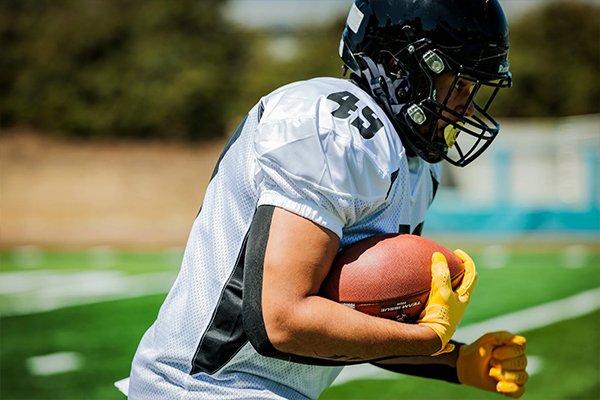Taping legs are also an essential step for running enthusiasts. Among the increasing number of runners every year, we often see that many runners suffer from various sports injuries for different reasons, one of which is pain in the front and back of the calf. Some people regard it as simple fatigue and soreness, but they do not know that it is a sports injury that is often overlooked by people: shin splint injury.
With shin splint injuries, knee pain, plantar fasciitis, tenosynovitis, muscle pain, a series of reactions will follow. The occurrence of this situation also means that future sports will be affected, which will bring a lot of inconvenience to life. However, there is now a way to prevent and alleviate this problem and that is the use of kinesiology tape to taping legs. Sticking it on the legs in the correct way will have a good effect, so more and more athletes and sports enthusiasts will choose taping legs to protect the legs and reduce the damage left after exercise.

what is taping legs
Taping legs are commonly used by athletes during sports and physical activity to provide support and stability to their muscles and joints. Taping legs is the process of applying kinesiology tape legs to specific areas of the leg to prevent injury, provide additional support, or promote recovery.
how to apply kinesiology tape to taping legs?
The first is attached to the front of the thigh muscle group, supporting the quadriceps.
Step 1: Bend your knees and measure the length of the patch, starting from the lower edge of the patella to 2/3 of the thigh.
Step 2: First fix a length of patch on the protruding part of the lower edge of the patella, stretch the patch slightly (you can feel that the patch is stretched), and follow the muscles on the front of the thigh (slightly concave on the outside of the thigh) Paste from bottom to top.
Step 3: Finally, leave a length of patch and fix it on the thigh, both on the left and right sides, and finally it will show a Y shape. Finally, no tension is needed to fix the starting and ending ends of the patch. After pasting, rub it back and forth to facilitate the melting of the adhesive and stick it evenly on the skin.

does kinesiology tape for legs work?
Kinesiology tape for legs is a non-invasive treatment method. The light and breathable patch is pasted on the skin, which can stimulate the human body, thereby affecting and regulating physiological functions. Kinesiology tape for legs can act on six major physiological systems: skin (epidermis, dermis), nerves, fascia, muscles, joints and circulation, lymph, etc. The skin is the largest organ of the human body. It is rich in various sensory receptors and capillaries. The skin of the human body is full of sensory receptors. The sensory nerves transmit the signals to the brain area. After being interpreted by the brain, the signals are sent by the motor nerves. make the body respond.
The weight and thickness of the Kinesiology tape for legs imitates the skin of the human body. The special adhesive composition and coating method allow the patch to adhere to the skin while maintaining breathability. The patch has elasticity and retractability. When the patch is applied to the skin, the retraction of the patch will cause the skin to wrinkle. These folds can reduce the pressure on the sensory receptors in the skin, regulate pain, increase the subcutaneous space, and promote the microcirculation of subcutaneous microvessels and interstitial fluid. Therefore, the effect of using taping legs after kinesiology tape exercise is still considerable, and can effectively relieve muscle fatigue and pain.

how to take off kinesiology tape legs?
After using the taping legs tape, it should be gently torn off from the edge along the leg, remember not to remove it violently, so as not to damage the skin surface.
Before removing, you should soak the kinesiology tape legs in water for a few minutes, or moisten the kinesiology tape legs with a wet towel or lotion, and then remove slowly, otherwise, your superficial skin may be torn off, causing redness or rash. If you accidentally make such a mistake and cause the skin to fall off, it doesn’t matter, because it’s just the surface skin, no special treatment is needed, and it will automatically repair after a night’s sleep.





